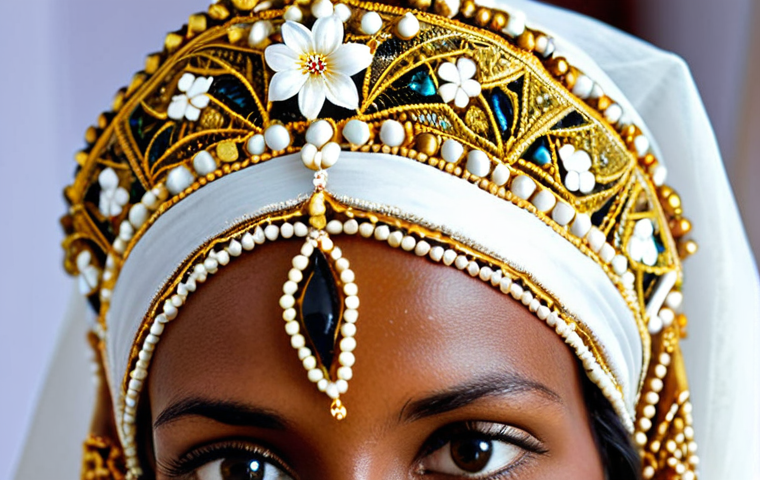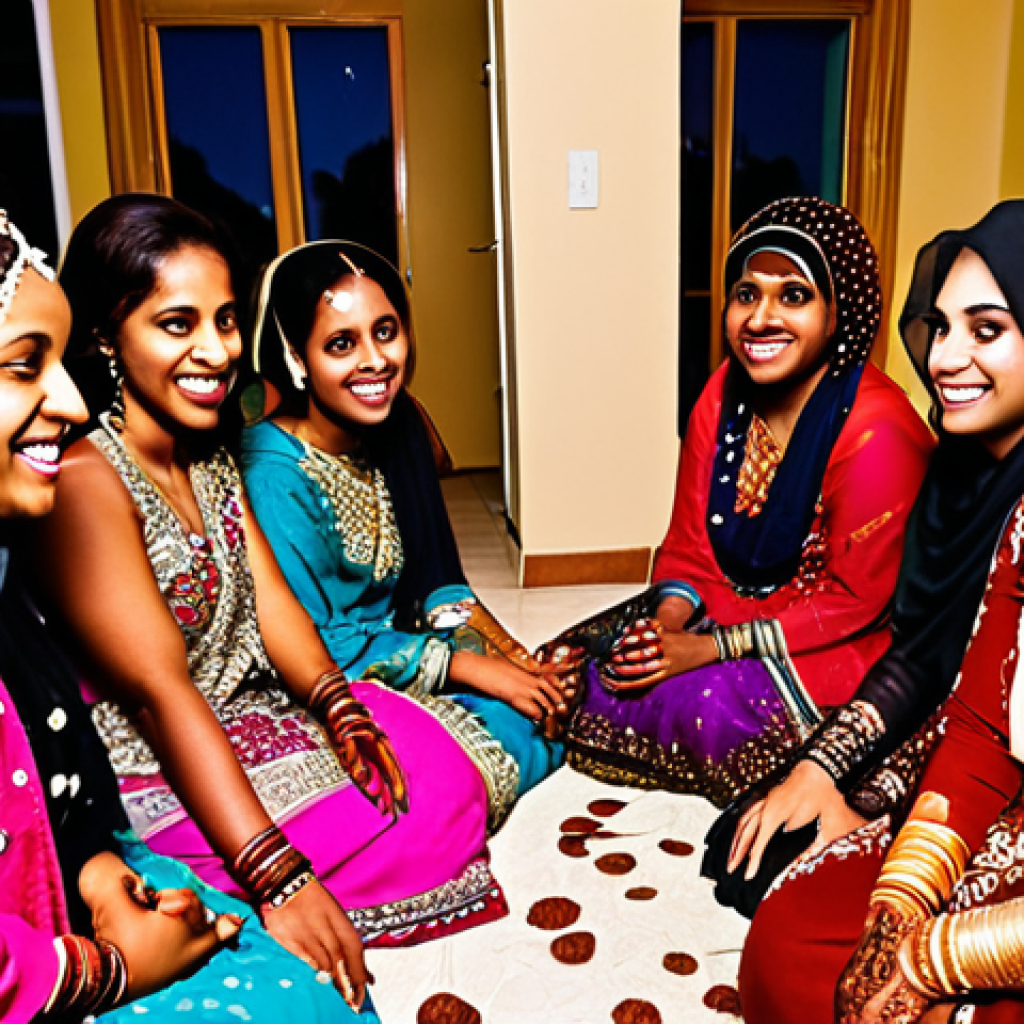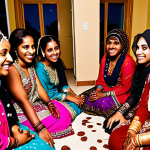Somalia, a land steeped in rich traditions and vibrant customs, presents a fascinating tapestry of marriage practices. From the intricate negotiations to the joyous celebrations, Somali weddings are a beautiful blend of Islamic principles and deeply rooted cultural heritage.
I’ve always been captivated by how communities come together during these events, showcasing incredible resilience and unity. It’s way more than just saying “I do”; it’s a powerful demonstration of family bonds and social cohesion.
I’ve seen firsthand the incredible artistry in the henna designs and the vibrant colors of the traditional clothing. Let’s delve deeper into the heart of Somali wedding traditions and uncover the stories they tell!
Somalia, a land steeped in rich traditions and vibrant customs, presents a fascinating tapestry of marriage practices. From the intricate negotiations to the joyous celebrations, Somali weddings are a beautiful blend of Islamic principles and deeply rooted cultural heritage.
I’ve always been captivated by how communities come together during these events, showcasing incredible resilience and unity. It’s way more than just saying “I do”; it’s a powerful demonstration of family bonds and social cohesion.
I’ve seen firsthand the incredible artistry in the henna designs and the vibrant colors of the traditional clothing. Let’s delve deeper into the heart of Somali wedding traditions and uncover the stories they tell!
The Significance of the Sooraan: A Pre-Wedding Revelation

The *sooraan* is one of the most critical steps. It’s when the groom’s family formally asks for the bride’s hand in marriage. It’s far from a simple question, though.
Envoys from the groom’s family, often elders respected for their wisdom and diplomacy, journey to the bride’s home. I remember once witnessing a *sooraan* where the negotiations went on for hours, with both families meticulously discussing everything from the *mahr* (dowry) to the wedding arrangements.
The level of detail and respect was astounding. It’s not just about getting married; it’s about building a strong foundation of mutual understanding and respect between two families.
This process includes a thorough vetting of both families’ backgrounds, ensuring compatibility and social standing. Honestly, it felt like watching a scene from a historical drama unfold right before my eyes.
1. Laying the Foundation: The Formal Proposal
During the *sooraan*, the groom’s representatives don’t just show up empty-handed. They bring gifts—often including money, jewelry, and fine fabrics—to demonstrate their sincerity and commitment.
This initial offering sets the tone for the negotiations and symbolizes the groom’s willingness to provide for his future wife. I’ve heard stories of families spending months preparing for this single event, ensuring that every detail is perfect.
It’s an investment not just in the marriage, but in the ongoing relationship between the two clans. The emotional weight of this moment is palpable, as it signifies the beginning of a new chapter for both families.
2. Negotiating the Mahr: A Symbol of Security
The *mahr*, or dowry, is a crucial element of the *sooraan*. It’s not a payment for the bride, but rather a security for her future. The amount is agreed upon by both families and can vary widely depending on their social status, wealth, and the bride’s education and accomplishments.
I know of a few instances where the *mahr* included livestock, gold, and even real estate. It’s a testament to the bride’s value and a commitment from the groom to provide for her well-being.
It’s also a safety net, ensuring she has financial independence in case of unforeseen circumstances.
The Headdress of the Bride
The Somali bridal headdress is a sight to behold. Adorned with intricate beadwork, shimmering gold threads, and often fragrant jasmine flowers, it is more than just an accessory; it’s a symbol of beauty, status, and cultural identity.
The craftsmanship that goes into creating these headdresses is truly remarkable. I’ve seen artisans spend weeks, even months, meticulously crafting each piece, ensuring it’s a perfect representation of the bride’s family’s heritage.
The colors, patterns, and materials used all hold specific meanings, often reflecting the bride’s clan and region.
1. The Veil’s Significance: Modesty and Grace
The veil, often made of delicate silk or lace, is an integral part of the bridal headdress. It symbolizes modesty, purity, and respect for Islamic traditions.
I recall witnessing a bride’s face light up as her mother gently placed the veil over her head, a moment filled with unspoken blessings and love. The way the veil drapes around the bride’s face adds an ethereal quality to her appearance, enhancing her natural beauty.
It’s a poignant reminder of the sacredness of marriage and the bride’s commitment to her new role.
2. Adornments and Embellishments: Reflecting Heritage
The beads, gold threads, and other embellishments that adorn the headdress are not just decorative; they often carry symbolic meaning. Each clan and region has its own distinct style, with specific colors, patterns, and materials representing their unique heritage.
For example, some headdresses feature intricate beadwork depicting ancestral stories or clan symbols. Others incorporate precious stones, signifying wealth and prosperity.
It’s like reading a visual story of the bride’s lineage and cultural identity.
Henna Night: A Celebration of Sisterhood
The henna night, or *Xeenna*, is a cherished tradition that brings together the bride and her female friends and relatives for an evening of laughter, music, and intricate henna designs.
This isn’t just about decorating hands and feet; it’s a bonding experience that strengthens the bonds of sisterhood. I’ve been to *Xeenna* nights where the air was filled with the rhythmic beat of drums, the melodic chants of traditional songs, and the joyful chatter of women sharing stories and advice.
The entire atmosphere is electric, a vibrant celebration of womanhood and the upcoming marriage.
1. The Art of Henna: Symbolism and Beauty
The henna designs applied during *Xeenna* nights are far more than just pretty patterns. They are imbued with symbolism, representing blessings, fertility, and protection.
The intricate designs often incorporate floral motifs, geometric patterns, and traditional symbols specific to the bride’s clan. I remember being mesmerized by the skill of the henna artists, who create these masterpieces freehand, using only their imagination and years of experience.
It’s an art form passed down through generations, a living testament to Somali culture.
2. Sharing Wisdom and Blessings: A Sisterly Bond
*Xeenna* night is also a time for sharing wisdom and blessings with the bride. Older women offer advice on marriage, motherhood, and maintaining a strong family.
It’s a tradition where women support each other, offer encouragement, and celebrate the bride’s transition into a new phase of her life. This communal aspect makes the henna night a pivotal experience, enriching the bride’s readiness and confidence as she steps into marriage.
I’ve witnessed firsthand how these moments of shared wisdom and support create a powerful sense of solidarity among the women.
The Nikah Ceremony: A Sacred Union
The *Nikah* ceremony is the heart of the Somali wedding, where the marriage contract is signed and the couple is officially declared husband and wife under Islamic law.
It is a solemn and sacred occasion, usually held in a mosque or the bride’s home, with close family and friends in attendance. The *Nikah* is not just a formality; it’s a deeply spiritual event that underscores the importance of faith and commitment in marriage.
I’ve been to *Nikah* ceremonies where the Imam’s words resonated with such sincerity and devotion that the entire room was filled with a sense of reverence.
1. The Marriage Contract: Rights and Responsibilities
The marriage contract, or *aqd*, is a legal document that outlines the rights and responsibilities of both the husband and wife. It specifies the *mahr* agreed upon during the *sooraan*, as well as other terms and conditions related to the marriage.
The contract is read aloud and signed by both the bride and groom, as well as witnesses, to ensure transparency and accountability. I once observed a *Nikah* where the lawyer meticulously explained each clause of the contract, ensuring that both parties fully understood their obligations.
This contract acts as a safeguard for both individuals, fostering trust and mutual respect.
2. Prayers and Blessings: Seeking Divine Guidance
After the marriage contract is signed, the Imam leads the attendees in prayers, seeking blessings for the newlywed couple. These prayers often invoke Allah’s guidance and protection, asking for a long, happy, and prosperous marriage.
It’s a deeply emotional moment, as the couple and their families humbly seek divine favor. The Imam’s heartfelt supplications create an atmosphere of spiritual unity and hope for the future.
The Walima: A Feast of Celebration
The *Walima* is a joyous wedding feast, often held after the *Nikah* ceremony, where the families of the bride and groom come together to celebrate the union.
It’s a lavish affair, with tables laden with traditional Somali dishes, music, and dancing. The *Walima* is more than just a meal; it’s an expression of joy, generosity, and community spirit.
I’ve been to *Walima* celebrations that lasted for days, with hundreds of guests feasting, dancing, and celebrating the newlyweds.
1. Culinary Delights: A Taste of Tradition
The food served at the *Walima* is a reflection of Somali culinary traditions, with dishes like *bariis isku karis* (rice cooked with meat and spices), *hilib ari* (roasted goat), and *malawah* (sweet pancakes) taking center stage.
The feast is a culinary adventure, with each dish offering a unique blend of flavors and aromas. I remember being particularly impressed by the elaborate presentation of the food, with platters adorned with colorful fruits, vegetables, and intricate carvings.
It’s a feast for both the eyes and the palate.
2. Music and Dance: Celebrating New Beginnings
Music and dance are integral parts of the *Walima* celebration. Traditional Somali music, often played on drums, flutes, and stringed instruments, fills the air, encouraging guests to dance and celebrate.
The dancing is energetic and joyful, with men and women often performing separate dances, showcasing their unique styles and rhythms. I’ve seen elders and youngsters alike joining in the festivities, creating a vibrant and inclusive atmosphere.
These moments of communal celebration reinforce the sense of community and shared identity.
Gifts and Dowry: Expressions of Support
The exchange of gifts and dowry plays a significant role in Somali weddings, symbolizing the support and commitment of both families towards the newlywed couple.
These offerings provide the couple with a foundation as they begin their life together. I have witnessed families gifting everything from household items to livestock and even land, underscoring the significance of providing a stable and prosperous start for the couple.
The dowry, traditionally provided by the groom’s family, is not viewed as a purchase of the bride but rather as a financial security net for her future.
Here is a simplified table to illustrate the various components of a Somali wedding, based on the descriptions above:
| Wedding Stage | Description | Key Elements |
|---|---|---|
| Sooraan | Formal proposal and negotiations | Gifts, Mahr discussion, family vetting |
| Bridal Headdress | Symbolic adornment | Veil, beads, cultural symbols |
| Xeenna Night | Henna application and female bonding | Henna designs, sisterly advice |
| Nikah Ceremony | Sacred marriage contract signing | Marriage contract, prayers |
| Walima | Wedding feast and celebration | Traditional dishes, music, dance |
| Gifts and Dowry | Expressions of support | Household items, land, financial security |
1. Strengthening Bonds: The Act of Giving
The act of giving gifts during a Somali wedding goes beyond mere material value; it strengthens the bonds between families and reinforces their commitment to supporting the newly married couple.
Each gift carries a message of goodwill and wishes for a prosperous future, ensuring that the couple feels loved and supported as they start their journey together.
It’s about creating a network of support that the couple can rely on in the years to come. I’ve seen how these gestures create a lasting impact, solidifying family relationships and establishing a strong foundation for the marriage.
2. The Future Security: Guaranteeing Stability
The dowry, as a form of financial security, assures the bride of her well-being and independence should unforeseen circumstances arise. It signifies the groom’s commitment to providing for her and highlights the importance of ensuring the bride’s stability within the marriage.
The dowry is often discussed openly and agreed upon by both families, reflecting a mutual understanding and respect for each other’s traditions. I’ve observed the sense of security and confidence this assurance brings to the bride, knowing that her future is protected.
Post-Wedding Traditions: Building a Life Together
Even after the wedding festivities conclude, Somali culture maintains traditions that support the newlyweds as they build a life together. These customs range from community involvement to continued support from family members, ensuring that the couple is well-integrated into their new roles.
I recall stories of extended family members helping the couple establish their household, providing guidance on finances, and offering emotional support during the initial years of marriage.
This ongoing support network is crucial in ensuring the couple’s success and happiness.
1. The Role of Community: Sustaining Support
The wider community plays a significant role in supporting the newlyweds, offering advice, assistance, and a sense of belonging. Neighbors and friends often check in on the couple, offering practical help and a listening ear.
This communal aspect of Somali culture ensures that the couple never feels alone and that they have a strong network of support to navigate the challenges of married life.
I’ve witnessed firsthand how this sense of community contributes to the couple’s overall well-being and happiness.
2. Continued Family Involvement: A Lifelong Connection
The families of the bride and groom maintain a lifelong connection, providing continued support and guidance to the couple as they navigate their journey together.
Family members often offer advice on raising children, managing finances, and maintaining a strong marriage. This intergenerational support is a hallmark of Somali culture, ensuring that the couple has access to the wisdom and experience of their elders.
I’ve seen how these family connections provide a sense of stability and continuity for the couple, fostering a lasting and fulfilling marriage. Somali weddings encapsulate a blend of cultural traditions and Islamic principles, creating celebrations that are both beautiful and deeply meaningful.
From the sooraan to the walima, each element showcases the values of family, community, and faith. Having witnessed several Somali weddings, I’ve come to appreciate the depth and significance of these traditions, realizing they are not just ceremonies but vibrant expressions of Somali identity and unity.
Somali weddings encapsulate a blend of cultural traditions and Islamic principles, creating celebrations that are both beautiful and deeply meaningful.
From the *sooraan* to the *walima*, each element showcases the values of family, community, and faith. Having witnessed several Somali weddings, I’ve come to appreciate the depth and significance of these traditions, realizing they are not just ceremonies but vibrant expressions of Somali identity and unity.
In Closing
Witnessing a Somali wedding is like stepping into a living, breathing tapestry of tradition and community. The vibrant colors, the heartfelt ceremonies, and the unwavering commitment to family create an unforgettable experience. It’s a powerful reminder of the importance of cultural heritage and the beauty of shared celebrations. These weddings aren’t just events; they’re cornerstones of Somali society, preserving values and strengthening bonds for generations to come.
Good to Know Information
1. Best Time to Attend: Somali weddings often take place during the dry season to ensure better travel conditions for guests.
2. Gift-Giving Etiquette: Monetary gifts are common and greatly appreciated. It’s a practical way to support the newlyweds as they start their life together.
3. Dress Code Considerations: While Somali weddings are vibrant and colorful, it’s important to dress modestly out of respect for Islamic traditions.
4. Cultural Sensitivity: Be mindful of local customs and traditions. Observing and asking questions shows respect and genuine interest.
5. Language Basics: Learning a few basic Somali phrases like “Mahadsanid” (thank you) can go a long way in showing your appreciation and respect.
Key Takeaways
Somali wedding traditions are a beautiful blend of Islamic principles and cultural heritage. The *sooraan* is a formal proposal involving intricate negotiations and gift-giving. The bridal headdress symbolizes beauty, status, and cultural identity. *Xeenna* night is a celebration of sisterhood with henna art and shared wisdom. The *Nikah* ceremony is a sacred union with a marriage contract and prayers. The *Walima* is a joyous wedding feast filled with traditional dishes, music, and dance. Gifts and dowry symbolize support and commitment to the newlywed couple.
Frequently Asked Questions (FAQ) 📖
Q: What’s the deal with the marriage negotiations in Somali culture?
A: re they as intense as they sound? A1: Okay, so the marriage negotiations in Somalia, or meher as it’s often called, are a pretty big deal. Imagine it like a serious business meeting, but way more personal.
Families from both sides get together, usually with elders playing a key role, to discuss the mahar, which is the bride price. This isn’t just about money though.
It’s about establishing respect and commitment between the families. I remember hearing a story from a friend whose cousin got married. The negotiations went on for days!
Apparently, the bride’s family wanted assurances that the groom could provide for her and that their daughter would be well taken care of. It can get pretty intense, but at the end of the day, it’s all about ensuring a good future for the couple.
It’s a delicate dance of tradition, finances, and family pride.
Q: I’ve heard Somali weddings are incredibly vibrant. What are some of the standout traditions and customs that really make them special?
A: Oh man, Somali weddings are a FEAST for the senses! Forget drab ceremonies; these are explosions of color and culture. One thing that always strikes me is the henna night.
The bride and her female relatives and friends get together to decorate their hands and feet with intricate henna designs. It’s a super fun, girls-only affair filled with laughter and bonding.
And the clothing! Forget white dresses, think vibrant, flowing fabrics in stunning colors. Plus, the music is infectious!
There’s often traditional Somali dancing and drumming that gets everyone up on their feet. Honestly, it’s less like a formal wedding and more like a massive, joyful celebration of community and love.
I personally watched a Somali wedding down the street last year, and the energy was just amazing!
Q: Considering Somalia’s history, how do Somali weddings play a role in strengthening community bonds and preserving cultural heritage?
A: That’s a really important point. Given the challenges Somalia has faced over the years, weddings take on even greater significance. They’re not just about celebrating a couple; they’re about reaffirming cultural identity and reinforcing community ties.
These events provide a space for people to come together, share traditions, and support one another. Think about it: when families from different regions or clans unite through marriage, it can promote reconciliation and understanding.
It’s like a living history lesson, passed down through generations. The songs, the dances, the rituals – they all carry stories and values that help to preserve Somali heritage.
I believe these weddings provide a sense of continuity and hope. I’ve read numerous articles about how vital they are for maintaining social cohesion.
In the face of adversity, Somali weddings are a powerful reminder of the strength and resilience of the Somali people.
📚 References
Wikipedia Encyclopedia
구글 검색 결과
구글 검색 결과
구글 검색 결과
구글 검색 결과
구글 검색 결과



